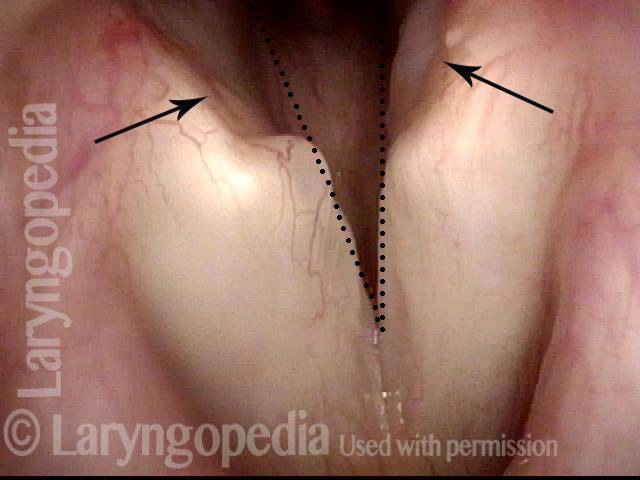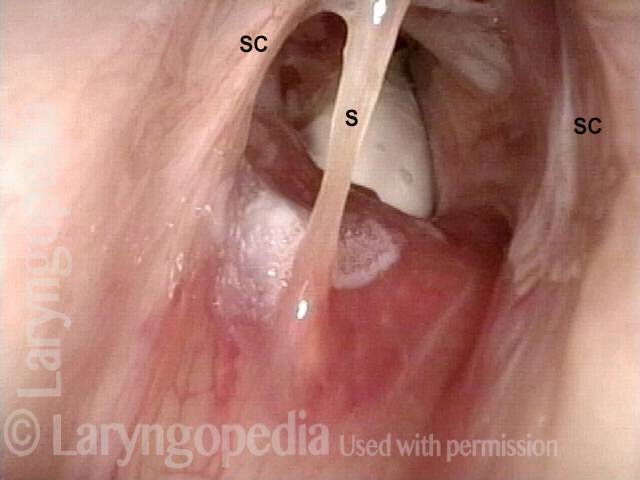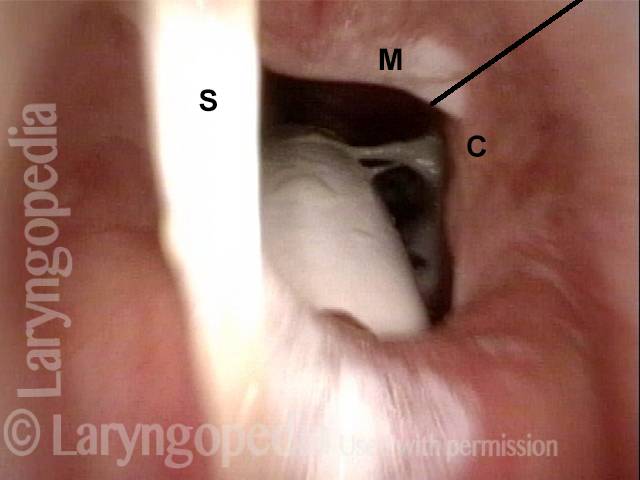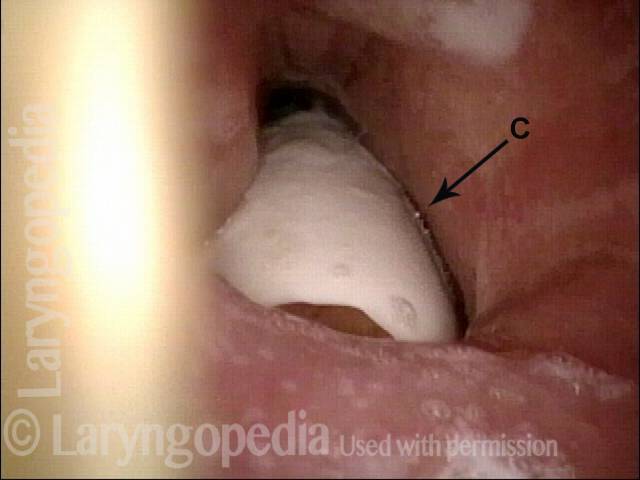An abnormal laxity or softening of laryngeal tissues, most often seen during inspiration as floppiness and indrawing of the arytenoid mucosa or aryepiglottic cords. Sometimes the epiglottis acts like a sail and, caught by the inspiratory air, flips downward to partially cover the laryngeal vestibule. Laryngomalacia may be the result of structural weakness, especially in premature infants; it can also be “induced” or “allowed” in older children and adults of all ages, as one type of nonorganic breathing disorder.



